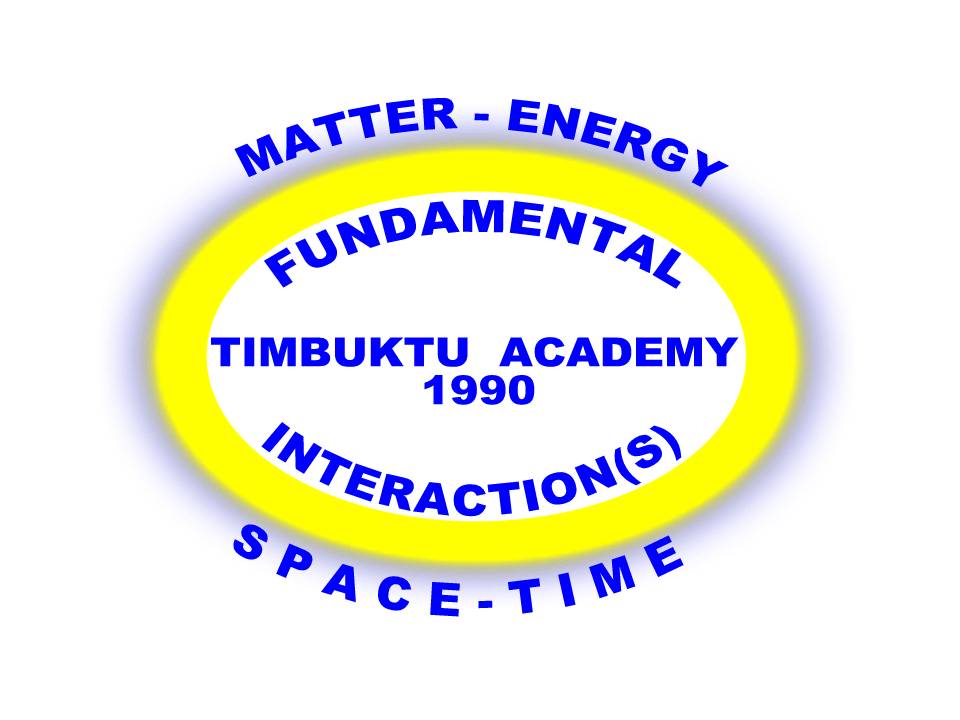- Summary
- The Law of Human Performance
- Studying Successfully & Making a Genius of Oneself
- 10-Strand Systemic Mentoring Model
- Academy Personnel
- Academy Scholars
- Program Acknowledgment
- Summer Internships
- Professional Readiness and Career Resources
- Undergraduate Scholarships/ Fellowships
- Graduate Scholarships/ Fellowships
- Graduate School Information
- GRE Corner
- Highlights
- Links to Organizations
- Summer Programs
- Contact Us
Timbuktu Academy
 |
A Brief History of the Timbuktu Academy
The Timbuktu Academy is named after the former University of Timbuktu, a bastion of scholarship in the middle of this millennium. The city of Timbuktu, in Mali, West Africa, is located on the banks of the majestic Niger river. Southern University and A&M College, in Baton Rouge, is likewise located on the banks of the mighty Mississippi.
The Timbuktu Academy was first established in 1990, pursuant to funding from the Louisiana Stimulus for Excellence in Research (LaSER) and from the National Science Foundation ( NSF ). LaSER is administered by the Louisiana Board of Regents. The first projects of the Timbuktu Academy respectively funded by LaSER and NSF were "Materials Science Education and Research (MASER)" and "Research Careers for Minority Scholars (RCMS)" at the Timbuktu Academy. In the same academic year, the Summer Science Institute (SSI) was re-established, thanks in part to funding from the US Department of Energy through the SLTBR Center for Energy and Environmental Studies. From 1992 to present, the Physics Laboratory of the National Institute of Standards and Technology (NIST) has supported the Academy.
From 1990-91 to 1992-93, the Timbuktu Academy was strictly for mentoring physics majors. The RCMS project involved twenty (20) undergraduate Scholars and the MASER project supported five precollege Scholars and five (5) college Scholars. Two of the first MASER scholars (Robert J. Smith and Troy D. Williams) won the national NASA USRP fellowships at the Timbuktu Academy About twenty (20) 11th graders participated in the Summer Science Institute.
In the 1992-93 academic year, Dr. Robert Ford provided Dr. Bagayoko, the Director of the Timbuktu Academy, with special Department of Defense (DoD) proposal guidelines that were calling for insfrastructure enhancements at Historically Black colleges and universities (HBCUs). Research and training programs were both allowed by these guidelines. Considering the strength of the Summer Science Institute, led by Dr. Ella L. Kelley, and taking into account the mentoring track record of Dr. Reza Mirshams, Dr. Bagayoko formed a group of three to submit a proposal to DoD for expanding the Timbuktu Academy, to include:
-
(a) twenty (20) engineering, twenty (20) physics, and ten (IO) chemistry majors,
-
(b) an expanded Summer Science Institute (SSI and SSI-middle school),
-
(c) a Summer Bridge Institute (SBI) for high achieving high school graduates, and
-
(d) the delivery of extensive educational services to the community, partly through publications and presentations.
DoD, after review, referred this project to the Office of Naval Research (ONR). ONR funded the above project, entitled "Engineering, Physics,and Chemistry, (EPC) at the Timbuktu Academy," at level of $584,034 per year for three years. This major funding marked the liftoff for the Timbuktu Academy as we currently know it. Please refer to the home page of the Academy, at http://www.phys.subr.edu for the paradigm, programs, activities, graduates, and other accomplishments of the Academy. The 1996 QEM award for "National Exemplary Undergraduate Program" to the Academy and the "outstanding" rating of the Department and the Timbuktu Academy by consultants of the State Board of Regents are also noteworthy achievements of the Timbuktu Academy, to date.
"Luck is often the result of preparation meeting, recognizing, and acting on opportunity"
